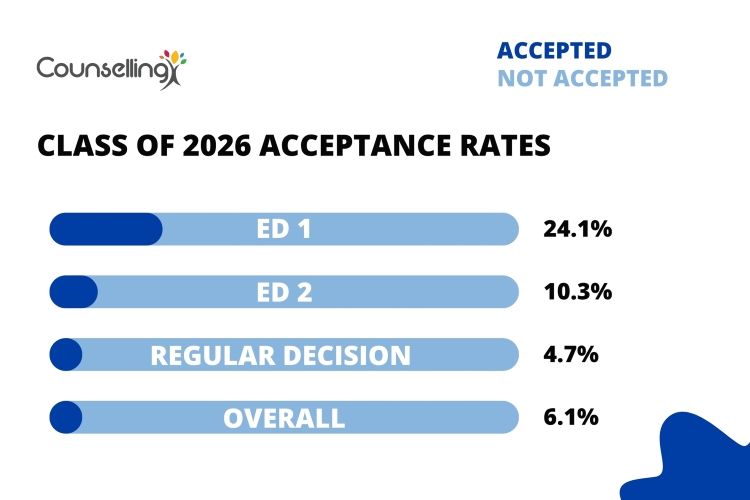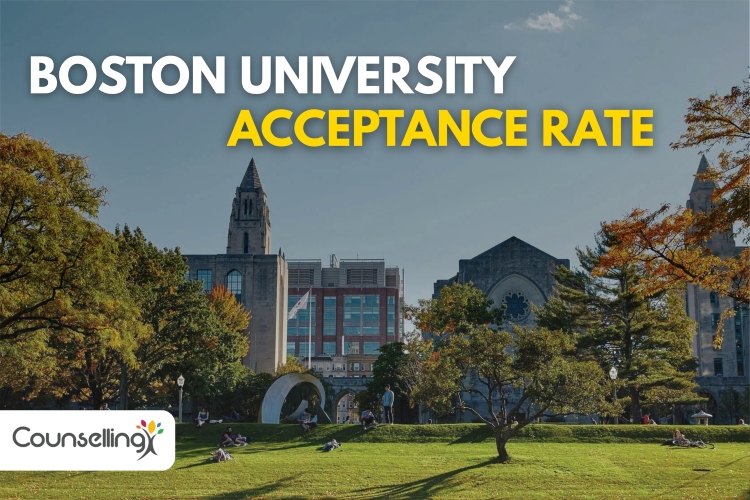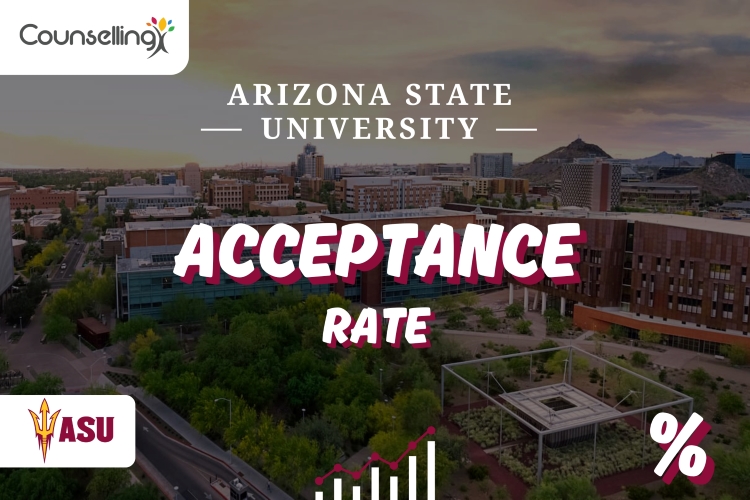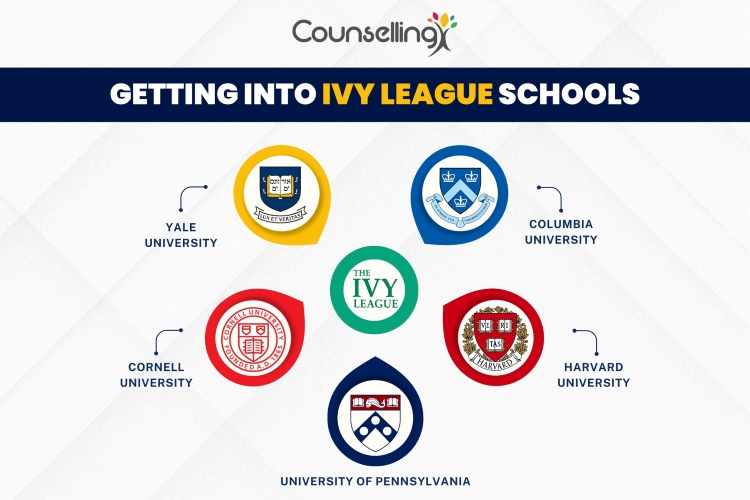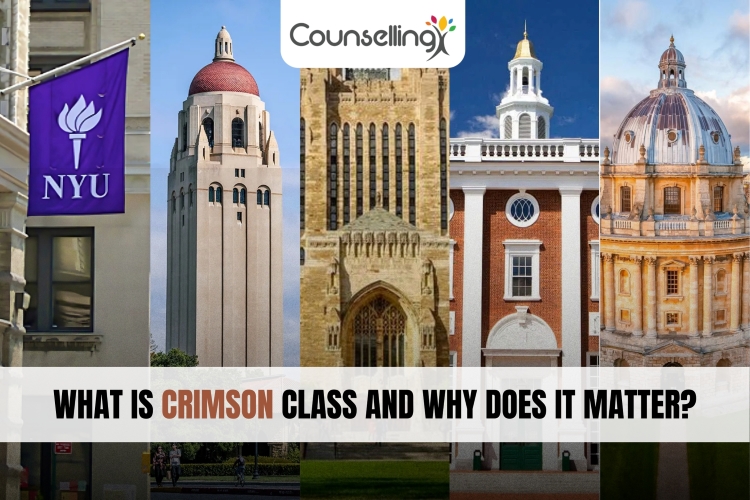Why do international students choose to pursue their PhD in America?
The USA is the favourite destination for international students, and there are over a million students there yearly, nearly twice as many as in the UK. The number of international students in the U.S. is almost on par with that of Europe. Ultimately, the decision to pursue an American or European education boils down entirely to the student.
The National Centre for Education Statistics reports a 15% rise in doctoral degrees awarded by private nonprofit institutions between 2009–10 and 2019–20.
In recent years, the United States has become the top choice for motivated international students seeking competitive graduate degrees. Many are particularly drawn to U.S. universities and colleges for their Ph.D. programs and remarkable research opportunities, especially in the STEM fields. Whatever your reasons for considering a Ph.D. in the U.S., it's natural to have questions and maybe some concerns.
This blog will give you answers to the ultimate questions that every student asks when considering a PhD in the US: Why, What, How, and When, while talking about a few others as well. Let’s find out the answers to all these questions.
Let’s start with the Why…
Why Should I Study PHd in the USA?
As an international student reading on to a blog or just thinking about their educational pathway, the first question that pops into their mind is “Why?” Why is it that out of the 206 countries in the world, I should choose to study in the USA? So, here are a few points that are going to answer the “why” and put your mind at ease.
PhD Course Duration: PhDs in the USA usually take longer than in other countries. A PhD typically takes 4-8 years for full-time students and 8-10 years for part-time students, varying by the field of study. Those with a master's degree in a relevant subject may finish their Phd in 4-5 years. Students usually spend 1-4 years on coursework, followed by 2-4 years focused on their dissertation.
The academic year in the US is split into two semesters: August to December and January to May. A longer PhD duration allows students more time to adapt and find their way, promoting a deeper understanding of their chosen subject at a more manageable pace.
Yearly Openings for PhDs: In the USA, there are often more Phd openings than in other regions, which means that Phd students here enjoy a wealth of funding opportunities, fellowships, and exciting research prospects. When candidates pursue their PhDs, they're recognised as part of the university staff, and these openings are treated like job vacancies. U.S. universities might offer one or two Phd positions each year, depending on budget availability.
Working While Studying: Many PhD candidates in the U.S. take on roles like teaching assistants, research assistants, or adjunct instructors, while they primarily concentrate on meeting the university's requirements for their doctoral degrees, which can differ by state. To cater to the variety of graduate courses and teaching assistant roles, university departments typically share Phd openings every year.
Also Read: 10 Part-Time Jobs for International Students in the USA
Open Call for Ph.D. Positions: In the U.S., universities open their doors each year for Ph.d. candidates to apply across various departments, depending on funding and available roles. It gives you an excellent opportunity to seize the moment and apply during the school's admission and enrollment period.
This application timeline allows international students to sync their applications with the common enrollment dates, like Spring or Fall admission. Plus, if your first attempt doesn't go as planned, you always have the time to reapply the following year.
Prestigious Universities: The universities in the US consistently stand at the top of the list for top universities worldwide, making the USA an excellent choice for PhD studies. While rankings shouldn't be the sole factor in your decision, they can reflect the quality of education available. When selecting where to pursue your PhD, consider various factors.
Budget-Friendly Tuition: Phd students can find a variety of tuition fee options to suit their budget. Although the American education system is often perceived as costly, many universities offer competitively priced programs. PhD tuition costs generally range from $28,000 to $55,000 per year, indicating that affordable options are available.
Vibrant Student Life: American universities are known for their lively campus experiences, featuring numerous extracurricular activities, clubs, and organisations. As a student, you'll have the chance to participate in social, cultural, and recreational activities in addition to your academic work.
Comprehensive Support: US universities provide various support services for PhD students. These may include academic advising, counselling, career services, libraries, writing centres, and various student organisations to aid your personal and professional growth.
A Land of Opportunity: Student life in the USA has something for everyone, no matter what you seek from a PhD program. With 50 states, six time zones, and numerous higher-education institutions, countless opportunities await students from around the globe.
Now that you know the reasons to pursue a PhD in the country, it’s time to focus on the “What”..
What Are the Top Universities in the USA for a PhD?
Harvard University

Harvard, the oldest university on our list, was founded in 1636 in Cambridge, Massachusetts. Known for academic excellence, it has 10 schools, three museums, and three campuses. It's the wealthiest university globally, valued at around $50. 7 billion, and boasts the largest academic library.
|
Required GPA |
3.6 or higher |
|
SAT Score |
1500-1580 |
|
Student-Faculty Ratio |
7:1 |
|
Popular Programs |
Accounting, Architecture, Public Policy, Law |
|
Academic Calender |
Fall Term and Spring Term |
Princeton University

Princeton, established in 1746 in New Jersey, was initially the College of New Jersey. It's the 4th oldest U. S. university and ranks first in ‘Best Value Schools’ and ‘National Universities’ according to U. S. News 2025. Admission is competitive, with a 4% acceptance rate. Princeton operates a residential college system and is known for its eating clubs. The Princeton University Art Museum exemplifies its commitment to the arts and the Lewis Centre for the Arts, which has educated notable figures like Presidents Madison and Wilson.
|
Required GPA |
3.8-4.0 |
|
SAT Score |
1500-1580 |
|
Student-Faculty Ratio |
7:1 |
|
Popular Programs |
Accounting, Architecture, Public Policy, Law |
|
Academic Calender |
Fall Term and Spring Term |
Columbia University

Columbia University was founded in 1754 as King's College. Columbia is New York's oldest university and the fifth oldest in the U.S. It has 20 schools and a challenging 4% acceptance rate. Columbia is known for significant scientific advances and administers the Pulitzer Prize. Popular PhD programs include biomedical engineering and finance. Ranked 34th in QS World University Rankings 2025, it is also home to the Columbia Daily Spectator.
|
Required GPA |
3.6 or higher |
|
SAT Score |
1490-1580 |
|
Student-Faculty Ratio |
6:1 |
|
Popular Programs |
Biomedical engineering and finance |
|
Academic Calender |
Fall Term and Spring Term |
Yale University

Yale University, established in 1701 and located in New Haven, Connecticut, is the 3rd oldest higher education institution in the US. It ranks 5th in ‘Best Value Schools’ according to U.S. News and World Report and has a student-faculty ratio of 6:1. Admission is highly competitive with an acceptance rate of 5%. Yale is also known for its music and drama programs, such as the Yale Whiffenpoofs, an a cappella group, and the Yale Dramatic Association. As an Ivy League member, Yale attracts global scholars.
|
Required GPA |
3.7 or higher |
|
SAT Score |
1500-1580 |
|
Student-Faculty Ratio |
6:1 |
|
Popular Programs |
English, Psychology, and Biostatistics |
|
Academic Calender |
Fall Term and Spring Term |
Massachusetts Institute of Technology (MIT)

Founded in 1861 and located in Cambridge, MIT is known for STEM. MIT has five schools and offers humanities and social sciences programs. Notable PhD programs include political science and economics. MIT features many research centres, including those for AI and cognitive science, as well as the renowned MIT Media Lab.
|
Required GPA |
3.5 or Higher |
|
SAT Score |
1510-1580 |
|
Student-Faculty Ratio |
3:1 |
|
Popular Programs |
Brain and cognitive sciences, computational science and engineering |
|
Academic Calender |
Fall Term and Spring Term |
University of Chicago (UChicago)

Since its founding in 1890, the University of Chicago has driven new ways of thinking. It is ranked among the top U.S. and global research universities. It comprises the undergraduate College of the University of Chicago, four graduate divisions, and eight professional schools. With a student-faculty ratio of 5:1 and an acceptance rate of 5%, an interesting aspect of the University of Chicago is its “Dean on Call’ program, which provides students with an administrator who is available 24/7 for assistance. One of its most cherished traditions is the “Scav,” which involves a 72-hour search for various encrypted clues, riddles, and other items on campus, in Chicago, and across the U.S. Film enthusiasts can participate in the university’s Doc Films, which is America’s longest continuously running student film society. The university is also home to the University of Chicago Press, the largest university press in the U.S. You may be surprised to learn that it boasts an alumni network comprising 100 Nobel Laureates, the highest number for any university in the world.
|
Required GPA |
3.5 or higher |
|
SAT Score |
1500-1580 |
|
Student-Faculty Ratio |
5:1 |
|
Popular Programs |
History, Art History, Accounting, Behavioural Science, Econometrics and Statistics, Political Economy, Molecular Engineering, and Quantum Science and Engineering |
|
Academic Calender |
Summer Term, Fall Term, Winter Term and Spring Term |
University of Pennsylvania (UPenn)

The University of Pennsylvania was established in 1740 by Benjamin Franklin in Philadelphia, Pennsylvania, U.S. It is among the nine colonial colleges in the Ivy League. In 1765, it founded the first medical school in the U.S. It comprises four undergraduate and twelve graduate and professional schools. The campus is home to historical landmarks, including the Fisher Fine Arts Library, a stunning Beaux-Arts building listed on the National Register of Historic Places. Its architecture is a mix of styles, ranging from the historic college hall to the modern Singh Centre for Nanotechnology.
|
Required GPA |
3.0 or higher |
|
SAT Score |
1500-1570 |
|
Student-Faculty Ratio |
8:1 |
|
Popular Programs |
Ancient History, African Studies, Applied Economics, Biology, Criminology, Demography, Earth and Environmental Science, Economics, Education, Culture and Society, Literacy Studies, and English. |
|
Academic Calender |
Fall Term, Summer Term and Spring Term |
Stanford University

Established in 1885 in California, U.S., Stanford’s areas of excellence encompass seven schools, research institutes, and arts and athletics. Committed to its multidisciplinary approach, Stanford encourages students to benefit from various programs. It also offers mini-courses lasting three weeks. The Knights-Hennessy Scholars Program, sponsored by Stanford, funds the first three years of graduate studies for students pursuing PhDs in fields such as arts, engineering, medicine, education, humanities, or social sciences, as well as professional degrees in business, law, or medicine. The university boasts the most significant number of Turing Award winners and is recognised as a supporter of entrepreneurship. Its alumni have founded major companies like Google, Nike, Hewlett-Packard, Wipro, Yahoo, and PayPal. Since its inception, Stanford has cultivated a thriving campus filled with top-tier faculty and a community of creative individuals.
|
Required GPA |
3.6 or higher |
|
SAT Score |
1510-1580 |
|
Student-Faculty Ratio |
5:1 |
|
Popular Programs |
Curriculum Studies and Teacher Education, Developmental and Psychological Sciences, Social Sciences, Humanities, and Interdisciplinary Policy Studies in Education. |
|
Academic Calender |
Summer Term,Fall Term, Winter Term and Spring Term |
Johns Hopkins University

Johns Hopkins University, founded in 1876 in Baltimore, Maryland, is the first American university modelled after European research institutions and invests heavily in research. Notable features include the Peabody Institute and Johns Hopkins Hospital. Popular PhD programs include Biological Sciences and Medicine. Alumni include Nobel laureates and a U.S. President. Johns Hopkins excels in healthcare and medicine.
|
Required GPA |
3.0 or higher |
|
SAT Score |
1530-1580 |
|
Student-Faculty Ratio |
6:1 |
|
Popular Programs |
Biological Sciences and Medicine. |
|
Academic Calender |
Summer Term, Fall Term, and Spring Term |
California Institute of Technology

California Institute of Technology (Caltech), founded in 1891 in Pasadena, California, focuses on technical arts and applied sciences. The university, with 5 NASA facilities and a network of observatories, emphasises science and engineering across six academic divisions. Caltech alumni have founded companies like Quora and Contour Energy Systems.
|
Required GPA |
3.5 or higher |
|
SAT Score |
1500-1580 |
|
Student-Faculty Ratio |
3:1 |
|
Popular Programs |
Chemistry, Physics, and Engineering fields |
|
Academic Calender |
Summer Term, Fall Term, and Winter Term |
Once you have gone through all the universities and decided on one, let's discuss how you can apply to your dream PhD program…
How Should I Apply for a PhD in the USA?
Applications for US PhD programmes are made directly to graduate schools. However, remember that US graduate schools often require substantial supplementary material with your application. Most will also charge an admission fee, typically between $50 and $100.
When applying for your chosen subject in the USA, you should provide relevant information and statements to the university. This will include:-
-The completed application form provided by your preferred university.
-A personal statement.
- Letters of reference.
- Test scores and grades: You will generally need to submit scores from standardised tests like the Graduate Record Examination (GRE) or the Graduate Management Admission Test (GMAT).
- English proficiency: Non-native applicants often must demonstrate their English skills through tests like TOEFL or IELTS. Requirements vary by institution, but most international students in the USA need a TOEFL score of around 90.
- Samples of work: It is advisable to provide relevant work that you have completed in relation to your chosen subject. You may even be asked to complete a small task during the application process.
- The application fee.
- Academic Transcripts
Do I Need a Master’s To Apply for a PhD in the USA?
You won’t necessarily need a Master's to apply for a PhD in the USA. American graduate programmes effectively combine Master's and PhD study. Some students actually receive a Master's at the end of their coursework stage.
If you already have a Master's, you may be able to receive credit for it and spend less time on the coursework stage of your programme. This decision is made by your graduate school, which will decide how relevant your existing degree is.
How Is a PhD in the USA Different From the UK and Europe?
Compared to the UK and Europe, studying for a PhD in the USA involves several key differences.
Students in the USA typically have direct contact with their professor, whereas in the UK, students may find that their PhD program is overseen by a professor who offers less flexibility in changing their research and study areas.
There can also be cultural differences between university experiences in the UK, Europe, and the USA.
US students are expected to engage in considerable teaching and grading duties, unlike PhD students in Europe. As a result, you may have less free time outside of the university while pursuing a PhD in the USA.
UK and European students decide on their PhD thesis subject area before they apply. While taking classes at a graduate level, prospective PhD students in the USA spend up to a year or two deciding on their specific research subject. It is normal to apply for up to six institutions for a PhD in the USA, and students apply to each institution separately, as there is no central organisation.
Students in the UK and Europe are expected to apply with an understanding of the subject already, usually in the form of a master's degree, and be ready to start studying at the PhD level straight away. In the USA, it is expected that students do not have an in-depth understanding of their subject, as they usually only have an undergraduate degree when they apply.
How Much Does a PhD Cost in the USA?
PhD tuition fees in the U.S. fluctuate significantly between public and private colleges. Additionally, the distinction between in-state and out-of-state fees at public universities influences overall costs. Often, costs are overstated or misrepresented due to very high figures from elite Ivy League schools, which do not reflect the average experience.
Actual tuition varies depending on institution type and, in some cases, student residency. However, the education statistics of the US National Centre provide a general idea about the cost of a PhD in the US.
|
Institute |
Public |
Private |
|
Domestic Tuition Fee |
$11,500 |
$40,000 |
|
International Tuition Fee |
$24,000 |
$50,000 |
While private universities often have higher fees, they also tend to offer more financial support. To get a clear picture of the tuition fees you might encounter for a PhD in the U.S., take the time to explore different programmes in your field and compare their costs. Just make sure you’re looking at similar items, as some schools might present fees annually, while others might use a semester or per-credit approach.
It is also Important to note that these fees are standard tuition costs and do not include the actual cost of living in the country. If you’re curious about budgeting your living expenses in the country, read this blog about Budgeting Your USA Living Costs.
When Should I Start Applying for a PhD in the USA?
Deadlines for applications to PhD programs in the USA are between December and February, and institutions should let you know about your application by April. Most US institutions recommend that you apply as far in advance as you possibly can to give them, and you, plenty of time to make arrangements.
Is a PhD in the USA the Right Decision?
To wrap things up, selecting a PhD program in the USA offers so much more than participating in groundbreaking research or being part of an exciting academic community—it opens doors to making a real difference globally! U.S. institutions saw an increase of 15% in doctoral awards from 2009 to 2019, proudly welcoming over a million international students each year.
As an international student, pursuing a degree in the USA is about so much more than just studying; it’s an investment in a future filled with top-notch research, various funding options, and exceptional support every step of the way. Hence, it is important to have everything cleared before you make a decision.
The longer duration of PhD programs in the USA highlights a commitment to thorough, in-depth learning, providing you with the time and resources to master your field and genuinely create meaningful change. As you consider starting this exciting journey, remember that the experienced counsellors at Counsellingx are here to assist you every step of the way, from the application process to funding tips, counsellingx guarantees you an offer letter from your dream university.
Frequently Asked Questions
Can International Students do a PhD in the USA?
The USA is an attractive destination for international students pursuing postgraduate studies, thanks to its high academic standards and diverse range of subjects. By earning a PhD in the USA, you can establish yourself as a globally recognised expert in your field. Furthermore, the USA provides numerous scholarships to attract more international students.
How much does a PhD cost for international students in the US?
Public institutions typically charge around $11,011 annually for in-state students and about $24,513 for out-of-state or international students. In contrast, private institutions charge an average of $43,505 per year for all graduate program students.
Can I complete a PhD in 2 years in the USA?
The duration of your studies depends on your field, but expect to invest a minimum of 3-4 years to complete a doctorate. In the US, the average time to earn a PhD is around 5.8 years.
Is a PhD in the USA fully funded for international students?
Over 1500 fully funded Ph.D. scholarships for 2025-2026 are open to international students at premier universities in the USA. Recipients will receive an average monthly stipend of $1500 in addition to coverage for tuition, accommodation, health insurance, and travel expenses.
Can I get PR in the USA after a PhD?
Once you complete your PhD program, your degree does not automatically grant you a green card in the US. However, having outstanding achievements such as a PhD can help you to qualify. The most common green card categories for PhD holders to apply under are the EB-1A and EB-1B.

